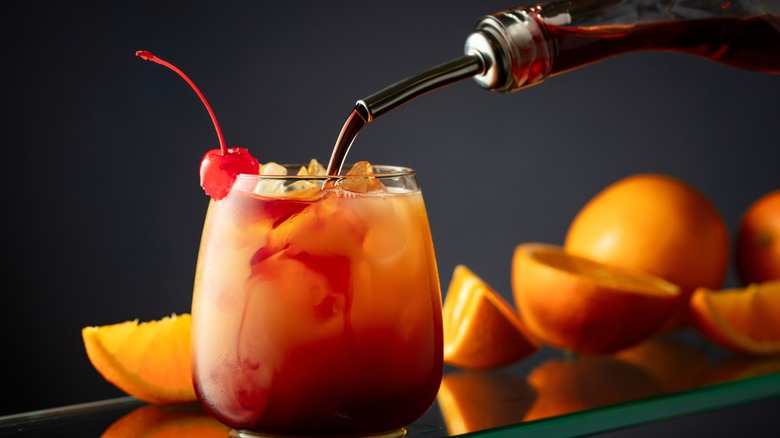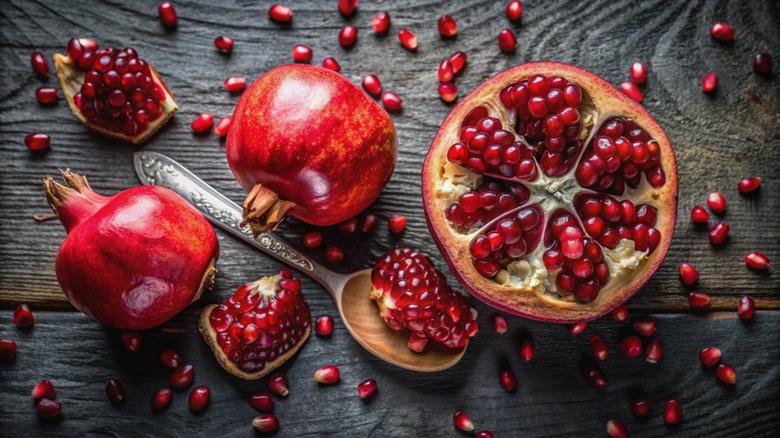Surprise! Grenadine Syrup Isn't Cherry-Flavored
When you're a kid, everything sweet and red is "cherry" flavored. Grownups come to learn that Swedish fish actually aim to approximate lingonberries, that red Otter Pops are supposed to be strawberry, and that candy apples evoke sugary cinnamon. But grenadine, which most kids also know as the critical ingredient that turns lemon-lime soda into a Shirley Temple, seems to linger as America's most assertively incorrectly identified flavor.
Synesthesia — the condition that makes some people taste colors, among other phenomena — notwithstanding, grenadine is not made with cherries, nor is it intended to taste like cherries. Although it looks an awful lot like the crimson liquid suspending the maraschino cherries in your refrigerator, grenadine is actually derived from pomegranates. Whether or not the finished product still just reads as red-tasting, if you're able to pick up on any notes from a typical bottle of grenadine, you're identifying the juice of the heavily seeded fruit.
How grenadine is actually made
In yet another twist, some of the most popular, mass-produced grenadines do not contain any fruit at all, making them no better than color-enhancing sweeteners. Higher quality commercial varieties, however, get back to basics with pomegranate juice concentrate. And you can whip up a scratch-made batch on your very own stovetop with as little effort as you'd prepare a simple syrup. Start with small proportions if it's your first effort. A little grenadine goes a long way in any case. Dissolve 1 cup of granulated sugar into ½ cup of pomegranate juice over a low heat, stirring as needed. Cool, remove to a glass jar or bottle, and refrigerate for up to about a month.
Once your real-deal grenadine is complete, you can dirty up those Shirleys, make a classic hurricane, and add that critical solar element to your tequila sunrise. It's also wonderfully versatile for jazzing-up your non-alcoholic cocktails, or even just enlivening a bottle of sparkling water.

